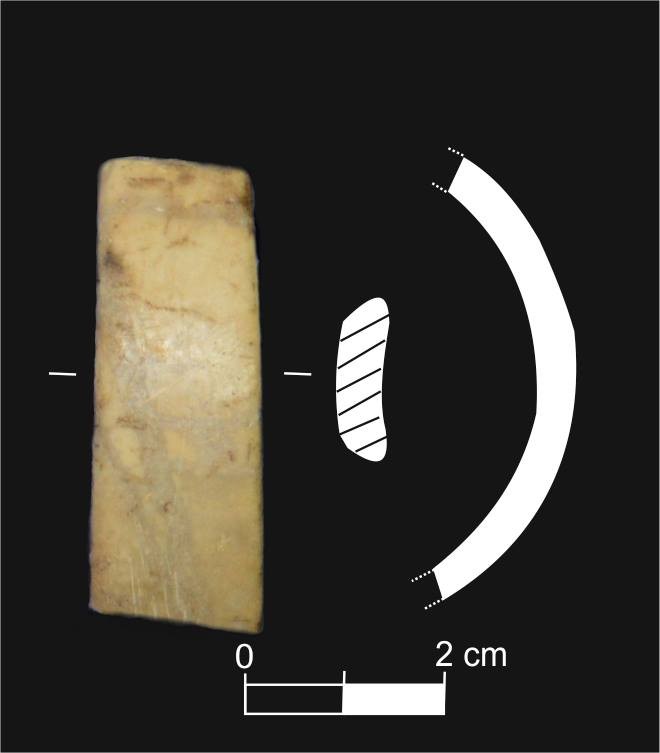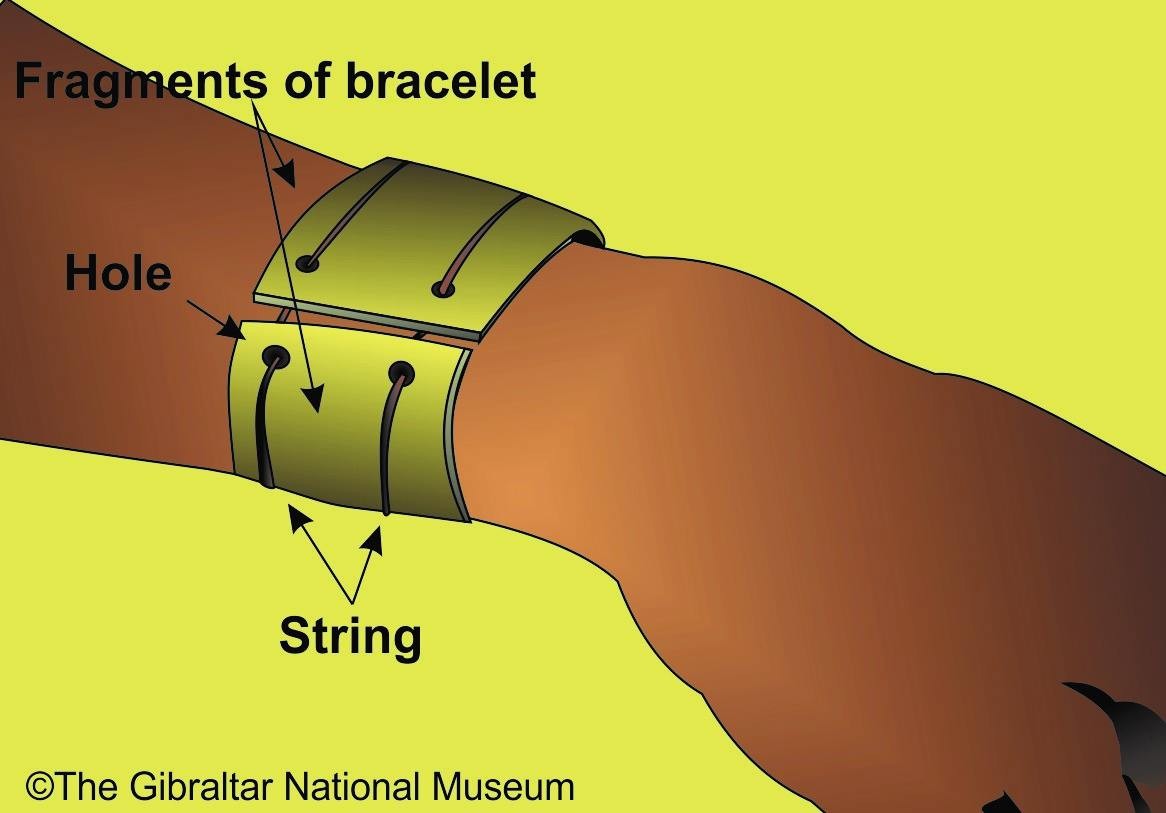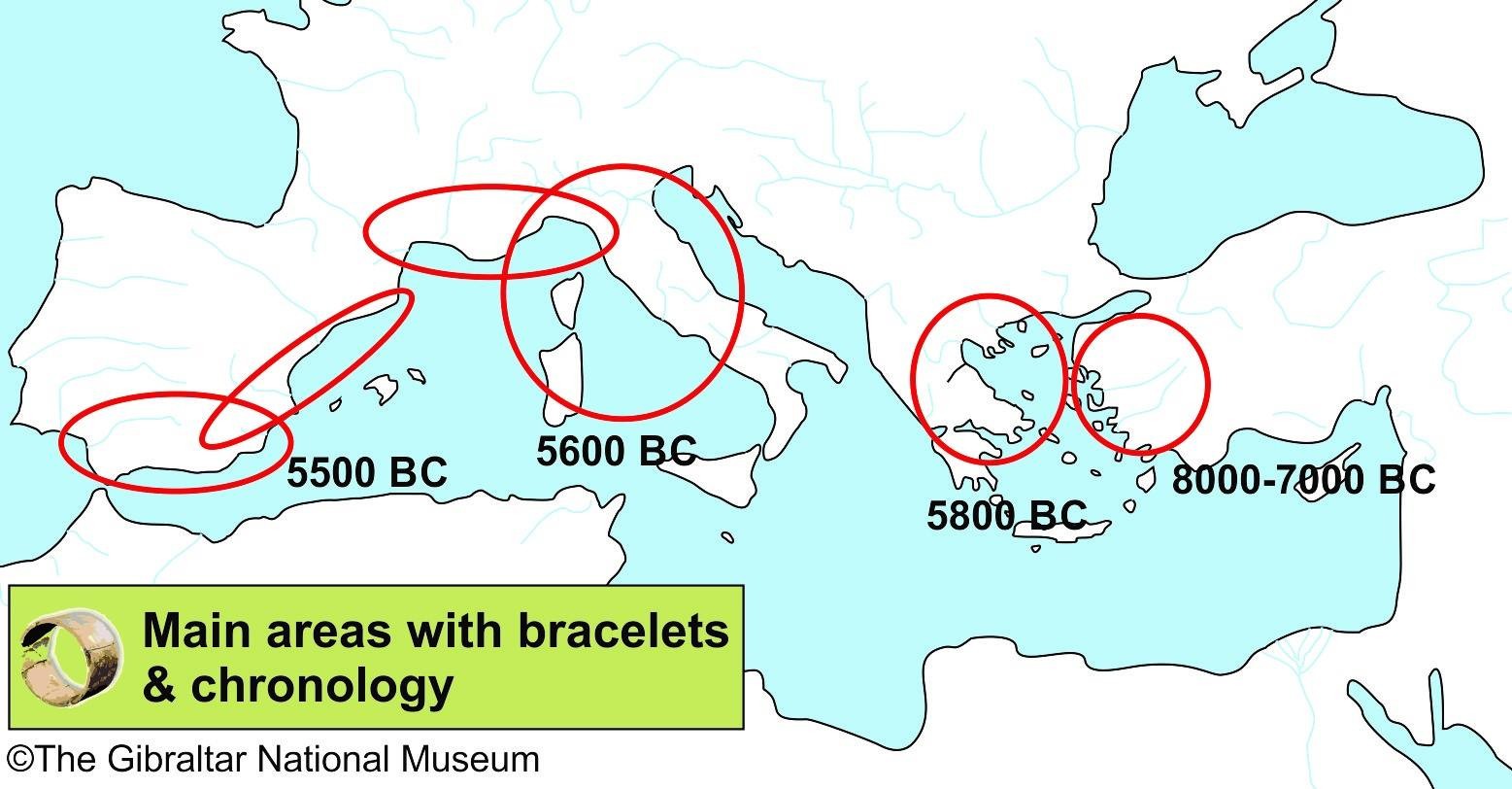Neolithic bracelet

Neolithic bracelet
This bracelet, carved out of a very crystalline limestone was discovered in a cave on the eastern cliffs of the Rock of Gibraltar, probably in a funerary context.
Such bracelets have been documented in the Iberian Peninsula, dating from the Early Neolithic (5,500-4,800 BCE). They are particularly prevalent in the areas of the Mediterranean coast of the Iberian Peninsula including Gibraltar; they are also found across a wider geographical range – from Anatolia (present-day Turkey) to the coast of Portugal. The bracelets are often found alongside other items, such as Cardium (a cockle) imprinted pottery, which are very characteristic of the Early Neolithic. This is the time when agriculture is arriving on our shores for the first time.
These bracelets were designed to be used as personal ornaments and were given a high social value. It was common for these to undergo repairs following a break, by perforating each end and fastening the fragments with rope. This would indicate the importance given to these artefacts by their ancient owners. Another fact which suggests social importance is the long distance travelled by many of these pieces, from the workshops where they were made to their place of discovery. Studies into the diameters of these bracelets, indicate that they were worn by children and adults of both sexes alike.


Published: March 25, 2020
Other similar VM - Archaeology
18-20 Bomb House Lane
PO Box 939,
Gibraltar
